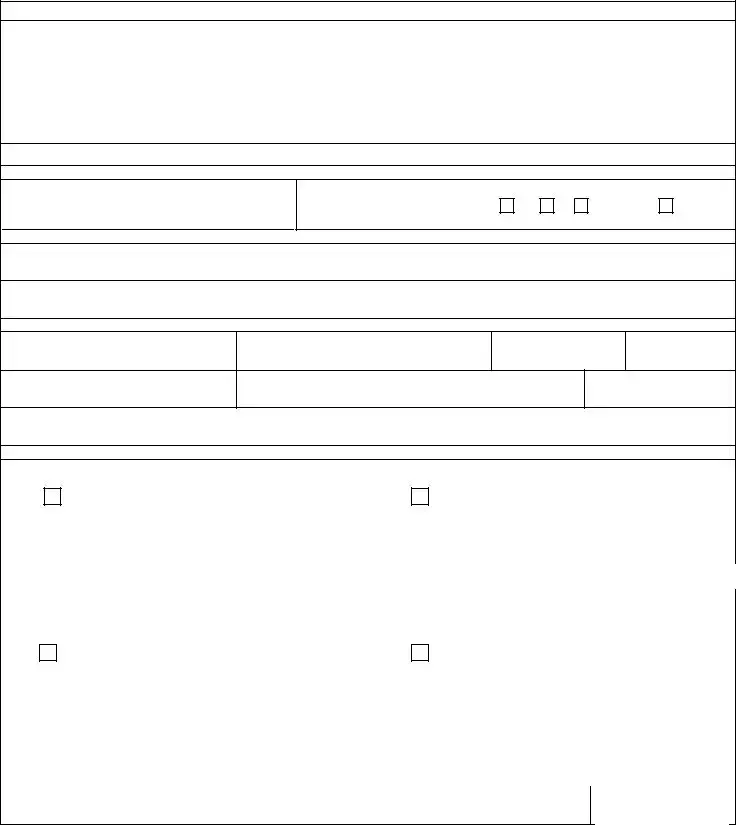
ADDRESS CHANGE FORM
PRIVACY ACT STATEMENT
Personal information is solicited on this form. As required by the Privacy Act of 1974, we advise:
1.AUTHORITY: 37 U.S.C. 101 et seq. 5 U.S.C., Chapter 55; 10 U.S.C., Chapters 67.71, and 871; Title 39, U.S.C. 406 and Title 10, U.S.C. 8013; E.O. 9397, Nov 1943
2.PRINCIPAL PURPOSES: To permit address changes for the Joint Uniform Military Pay System (JUMPS), the Retired Pay Systems, the Reserve component pay systems, and the civilian pay systems. To maintain a record of current address for pay related matters and bonds.
3.ROUTINE USES: Information may be disclosed to the General Accounting Office to provide financial information; Federal, State, and local courts for tax and welfare purposes; U.S. treasury to provide information on bonds purchased; and to the Department of Justice in some cases for criminal prosecution, civil litigation, or investigative purposes.
4.DISCLOSURE: Voluntary; however, failure to provide the requested information as well as the SSN may result in a delay in receipt of funds, Leave and Earnings Statement, Net Pay Advices, and miscellaneous pay-related documents.
Complete section 1 to change your mailing or organizational address for pay related items. Complete Section 2 to change the mailing address for some or all of your payroll deduction U.S. Savings Bonds. Civilian employees do not use Section 2 for bonds.
|
SECTION 1 |
SSN |
|
CHECK ONE: |
|
|
AD RET CIV GUARD/RES |
|
|
|
NEW MAILING ADDRESS
NUMBER, STREET, PO BOX
CITY, STATE, ZIP, APO/FPO
NEW ORGANIZATIONAL ADDRESS
FORWARDING ADDRESS
SECTION 2
ADDRESS CHANGE FOR PAYROLL DEDUCTION BONDS
|
NEW |
|
NEW |
|
ž (CHECK HERE IF THE SAME MAILING ADDRESS AS IN SECTION 1 |
|
ž (CHECK HERE IF THE SAME MAILING ADDRESS AS IN SECTION 1 |
|
AND COMPLETE FIRST BLOCK BELOW) |
|
AND COMPLETE FIRST BLOCK BELOW) |
|
NAME TO WHOM MAILED |
|
NAME TO WHOM MAILED |
B |
|
|
B |
|
O |
|
|
O |
|
N |
|
|
|
|
NUMBER, STREET, PO BOX |
N |
NUMBER, STREET, PO BOX |
D |
|
|
D |
|
#1 |
|
|
#2 |
|
|
CITY, STATE, ZIP, APO/FPO |
|
CITY, STATE, ZIP, APO/FPO |
|
|
|
|
|
|
NEW |
|
NEW |
|
ž (CHECK HERE IF THE SAME MAILING ADDRESS AS IN SECTION 1 |
|
ž (CHECK HERE IF THE SAME MAILING ADDRESS AS IN SECTION 1 |
|
AND COMPLETE FIRST BLOCK BELOW) |
|
AND COMPLETE FIRST BLOCK BELOW) |
|
NAME TO WHOM MAILED |
|
NAME TO WHOM MAILED |
B |
|
|
B |
|
O |
|
|
O |
|
N |
NUMBER, STREET, PO BOX |
N |
NUMBER, STREET, PO BOX |
D |
|
|
D |
|
#3 |
|
|
#4 |
|
|
CITY, STATE, ZIP, APO/FPO |
|
CITY, STATE, ZIP, APO/FPO |
|
|
|
|
|
SIGNATURE OF MEMBER/EMPLOYEE
AF Form 1745, NOV 90 (Word 6.0)
PREVIOUS EDITION WILL BE USED

